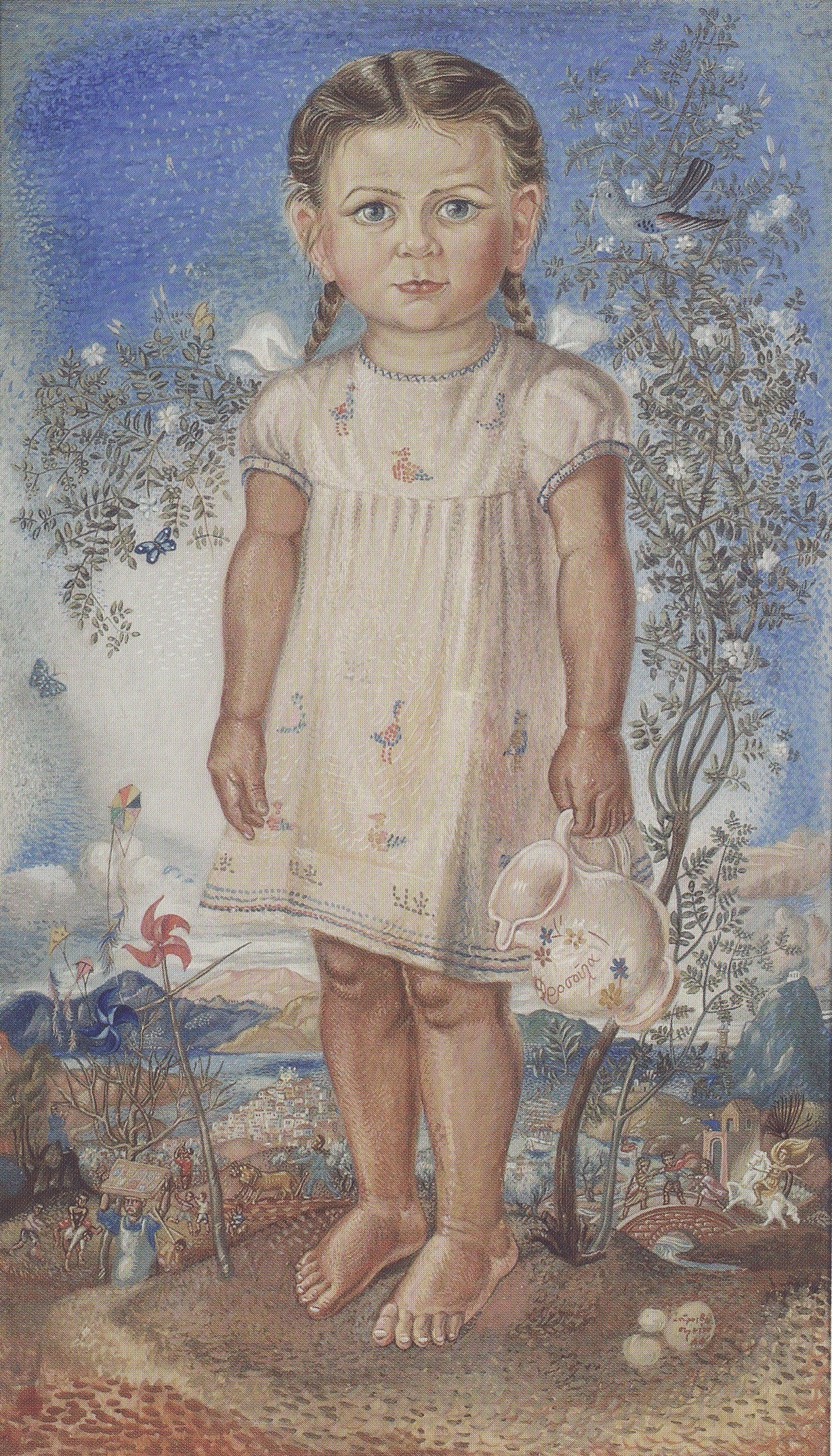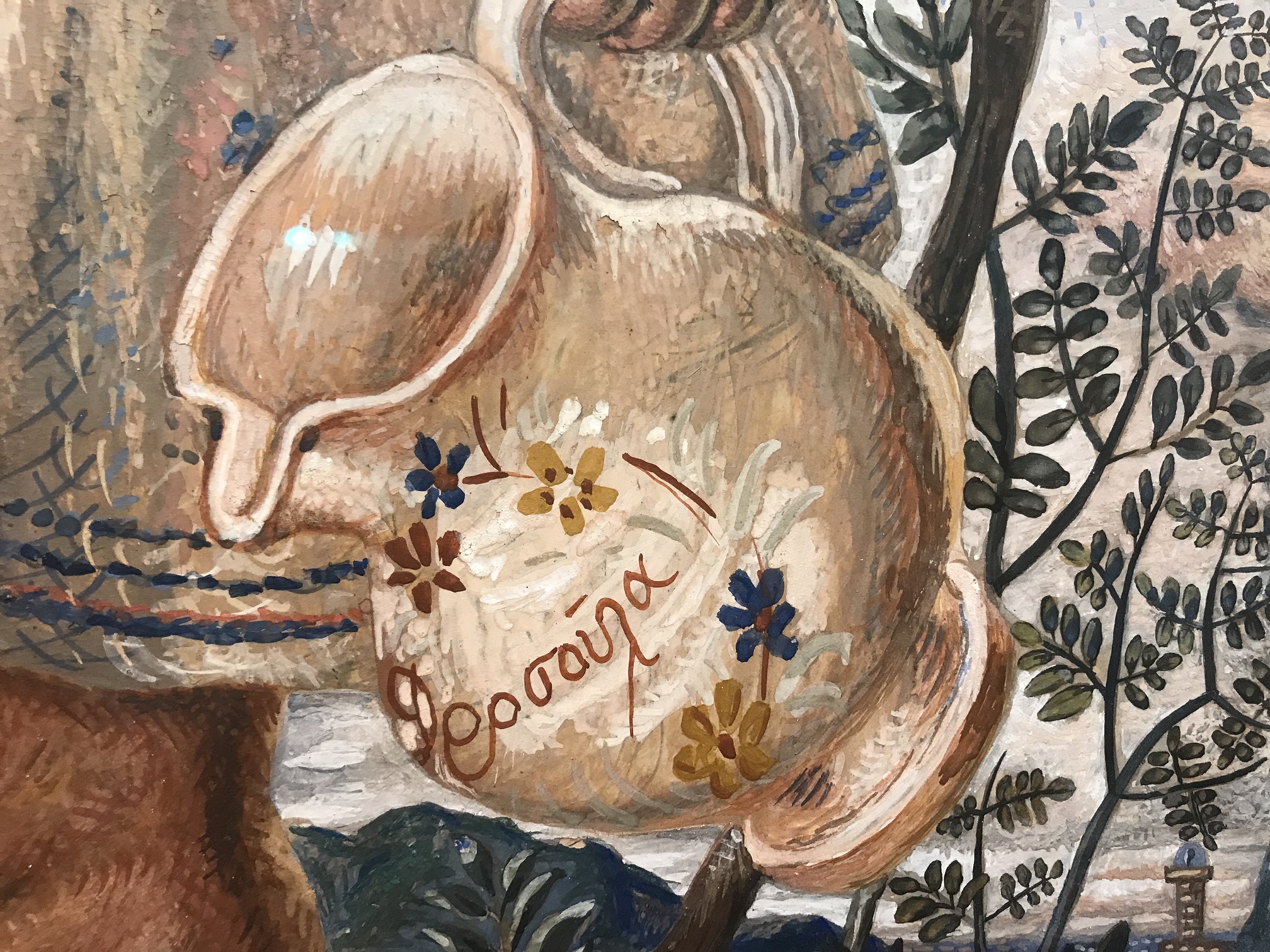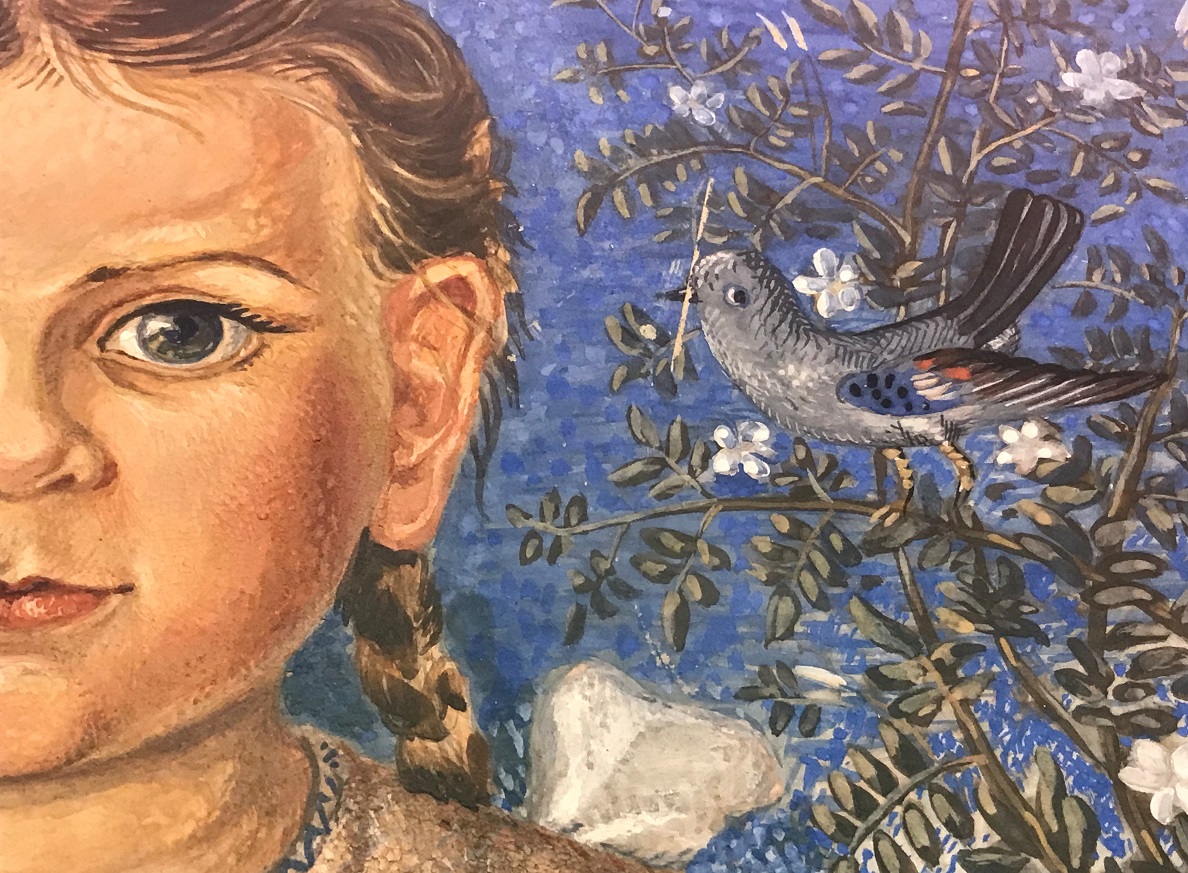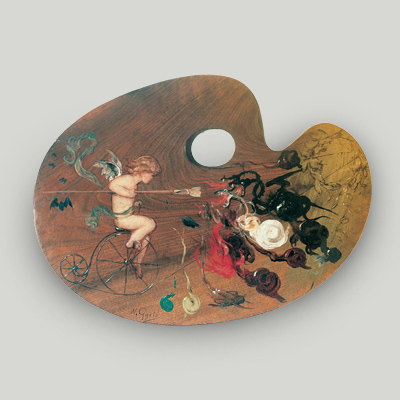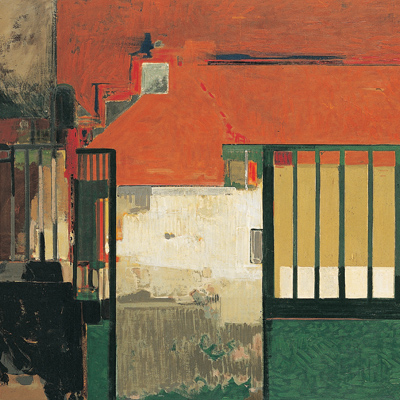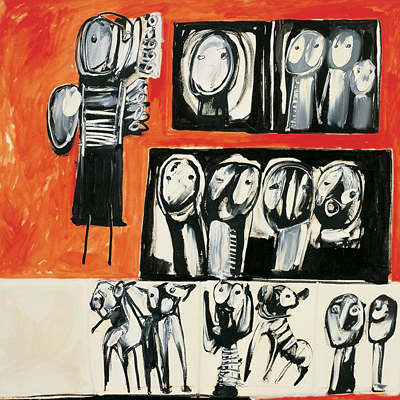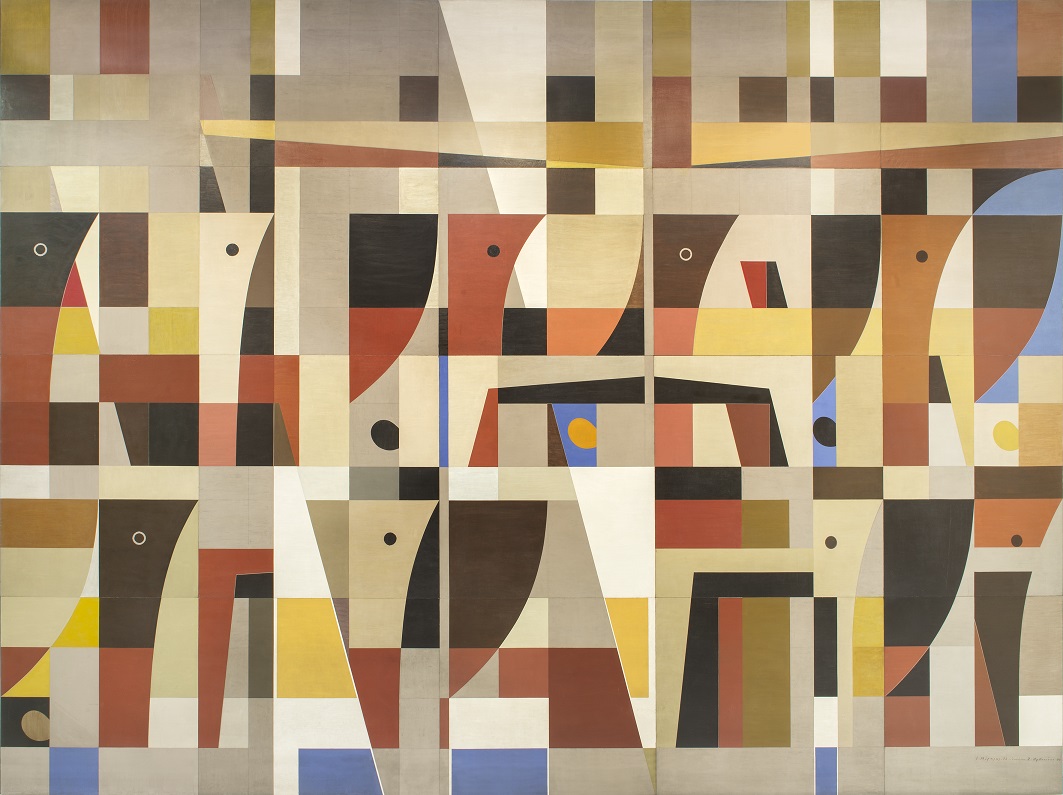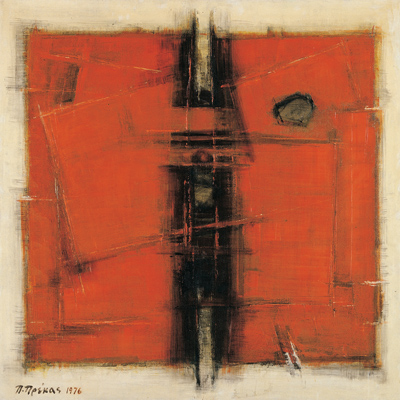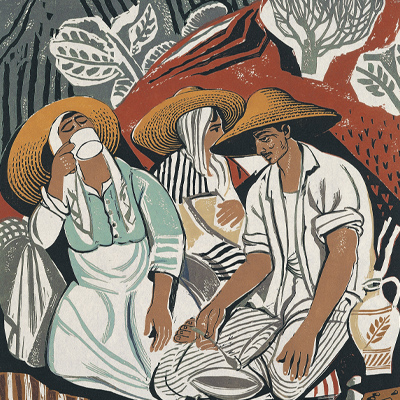Spyros Vassiliou, Drosoula
Drosoula by Spyros Vassiliou is a personal, emotional painting, full of symbolisms. The painting depicts the artist’s daughter. Vassiliou belongs to the Athens School of the Generation of the 30s and his work is centred around Greekness. His influences from Byzantine and folk art are apparent in Drosoula.
A personal and emotional piece
The painting Drosoula by Spyros Vassiliou depicts the artist’s daughter. The name Drosoula means “cool” or “fresh” in Greek. The young girl is presented from the perspective of the tender, fatherly gaze.
Drosoula’s figure is large and dominates the composition. She is found in the countryside, surrounded by the symbols of spring: flowers, butterflies and a blue bird, holding a small branch in its beak. The girl’s dress is white, with many decorative patters. In her hand she holds a jug. Her name is printed in calligraphy on the jug, surrounded by flowers.
Vassiliou manages to create a very personal painting, full of symbolisms and emotion. Using simple means, he captures the freshness of childhood.
Individual stories and symbolisms
The most interesting element of the painting is that the full-body portrait is surrounded by individual stories. Vassiliou uses them to add more meaning and symbolism to the entire piece.
To the left of the composition there is a group of children playing in a field. There are also farmers working and a man playing the flute. Some of the children are holding kites. The kites make the painting livelier with their vivid colours. Behind this storyline, a seaside village stretches amphitheatrically on a mountain slope.
On the opposite side, the scene that unfolds brings to mind a fairy-tale. There are 3 men on a stone bridge and a horseman approaching them. Behind them, a female figure can be seen in a tower. She waves them goodbye with a white scarf. This story is also surrounded by additional elements: the little port with the boats, a larger ship with a sail, a lighthouse and a white temple atop a hill.
Every inch of the painting’s surface is filled with representations or decorative elements.
Influences and artistic style
Drosoula shows influences from Byzantine and folk art. These are apparent mainly in the representation of the secondary figures of the composition.
In terms of style, the piece belongs to Realism. It has uniform lighting, without shading.
His life in a nutshell
Spyros Vassiliou (1902/3-1985) was born in Galaxidi. He came to Athens in 1921 and studied Painting at the Athens School of Fine Arts until 1926, under Nikolaos Lytras.
He taught in various art and theatre schools for many years. Other than painting, he worked in scenography, icon painting and engraving. As of 1927, he started creating stage sets for many plays and films.
In the years of the German Occupation of Greece, he turned to engraving. He secretly published woodcuts, illustrated manuscripts and handwritten editions. His artistic creations also include book illustrations.
Artistic influences
Vassiliou was an important representative of the so-called Generation of the 30s and more specifically of the Athens School. His work is centred around Greekness. As with all the representatives of this generation, he promoted the need to return to the roots of modern-Greek art.
In his works, folk and Byzantine art meet the contemporary movements of his time. Vassiliou, with a folk-like style, turned select elements of the Greek tradition into forms of constructivism, surrealism, pop art and photo-realism.
Favourite themes
Vassiliou’s works depict landscapes, scenes of everyday life and compositions with a lyrical or dream-like feeling.
The painter represented natural and urban space using oils, temperas and watercolours. His favourite themes include portraits, still life and scenes from everyday life.
A recognised artist
Vassiliou began to exhibit his work in 1926. In 1929 he held his first solo exhibition at the Stratigopoulos Gallery. In 1930 he won the Benaki Award for designing the murals at the Agios Dionysios Areopagitis Church.
He was a founding member of the Techni (Art) and Stathmi (Level) groups and participated in their exhibitions. He also participated in the Venice Biennale (1934, 1964), the Alexandria Biennale (1957) and the São Paulo Biennale (1959).
In 1960 his work Lights and Shadows was exhibited at the Guggenheim Museum and honoured with the local award of AICA Hellas. In 1975 and 1983 his works were exhibited at the National Gallery.
A triple representation of Drosoula
The Alpha Bank Art Collection also features 2 woodcuts by Vassiliou depicting the young girl:
- A same-titled woodcut from 1946.
- A woodcut titled Souvenir from Varkiza from 1947. In this woodcut the girl is depicted along with her younger sister.
The 3 pieces show many similarities, particularly in the rendering of the figures.
Bibliographical references
Drosoula by Spyros Vassiliou is referenced in the books (in Greek):
- S. Vassiliou. Lights and Shadows, 1969.
- H. Kambouridis, Spyros Vassiliou. Exhibitions, Ikaros, 1982.
- A. Kouria, The Child in modern-Greek Art 1833-1922, 1985.
- I. Orati, Contemporary Greek Painters: Spyros Vassiliou, Ta Nea, 2008.
The Alpha Bank Art Collection is not open to the public.
Research visits to the Art Collection can be organised upon request.
Contact us to book your visit.
